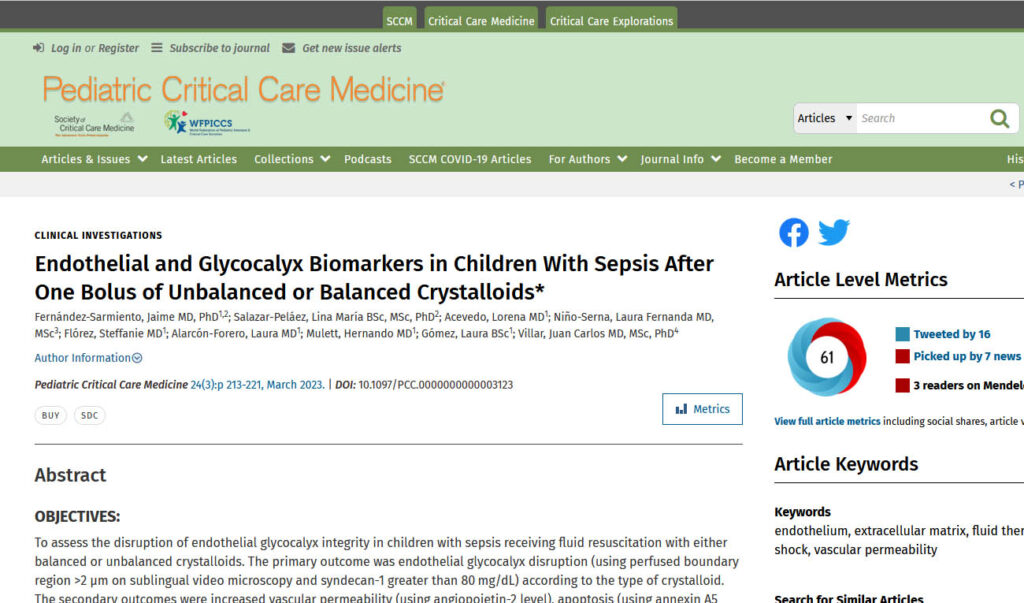Abstract
Objectives:
To assess the disruption of endothelial glycocalyx integrity in children with sepsis receiving fluid resuscitation with either balanced or unbalanced crystalloids. The primary outcome was endothelial glycocalyx disruption (using perfused boundary region >2 µm on sublingual video microscopy and syndecan-1 greater than 80 mg/dL) according to the type of crystalloid. The secondary outcomes were increased vascular permeability (using angiopoietin-2 level), apoptosis (using annexin A5 level), and associated clinical changes.
Design:
A single-center prospective cohort study from January to December 2021.
Setting:
Twelve medical-surgical PICU beds at a university hospital.
Patients:
Children with sepsis/septic shock before and after receiving fluid resuscitation with crystalloids for hemodynamic instability.
Interventions:
None.
Measurements and Main Results:
We included 106 patients (3.9 yr [interquartile range, 0.60–13.10 yr]); 58 of 106 (55%) received boluses of unbalanced crystalloid. This group had greater odds of endothelial glycocalyx degradation (84.5% vs 60.4%; adjusted odds ratio, 3.78; 95% CI, 1.49–9.58; p < 0.01) 6 hours after fluid administration, which correlated with increased angiopoietin-2 (rho = 0.4; p < 0.05) and elevated annexin A5 (p = 0.04). This group also had greater odds of metabolic acidosis associated with elevated syndecan-1 (odds ratio [OR], 4.88; 95% CI, 1.23–28.08) and acute kidney injury (OR, 1.7; 95% CI, 1.12–3.18) associated with endothelial glycocalyx damage. The perfused boundary region returned to baseline 24 hours after receiving the crystalloid boluses.
Conclusions:
Children with sepsis, particularly those who receive unbalanced crystalloid solutions during resuscitation, show loss and worsening of endothelial glycocalyx. The abnormality peaks at around 6 hours after fluid administration and is associated with greater odds of metabolic acidosis and acute kidney injury.


